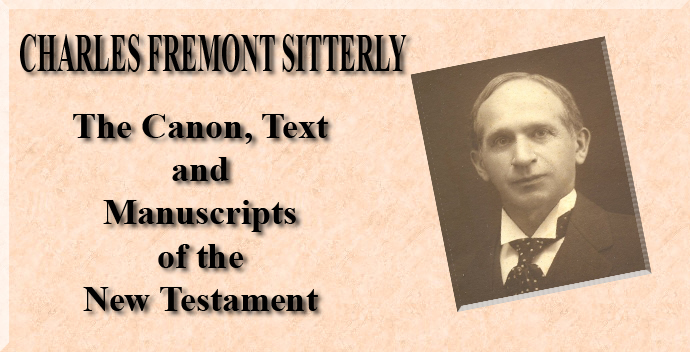
The Canon, Text, and Manuscripts of the New Testament
By Charles Fremont Sitterly
PART I - THE CANON OF THE NEW TESTAMENT
Traced from the latest Version of the English Bible through the Latin and Greek to the original writers
Chapter 2
The Canon of the Latin New Testament
|
Wycliffe leads us directly back to an even greater translation by an equally great Christian scholar, the Latin version of St. Jerome. What the Greek Septuagint is to the Hebrew Old Testament the Latin Vulgate is to the Greek New Testament. In each case a companion rendering is made into the succeeding tongue at once ancient, accurate, and deeply reverent. Protestants sometimes think of the Latin Vulgate as the peculiar possession of the Roman Church, but it is the common inheritance of undivided Western Christendom, which had no other Bible during the thousand years of its sole and supreme dominance. Now, although Jerome's Old Testament contains many Apocryphal books, his New Testament comprises precisely the twenty-seven books which we do receive as canonical. This millennium carries us back to about the year 380, to the age of the ecumenical councils, both Latin and Greek, and to a long lifetime of acquaintance with the Church Fathers of his age and of residence and research in all the great church libraries from Rome even unto Jerusalem. During this long era only one brief book ever appears to have claimed fellowship with Jerome's New Testament, and this only in certain sporadic and limited editions and centuries after the Master's death. It is the spurious epistle to the Laodicenes, which, as we have seen, came into vogue at the end of the sixth century. Pope Gregory the Great is responsible for the doctrine that Paul was the author of this epistle, and, although he himself never accounted it as canonical, his opinion as to its authorship, together with the fact of reference to an epistle of the Laodicenes, at the end of Colossians gave this letter frequent favor, yet even its special partisans, as John of Saulisbury, in the twelfth century do not fail to acknowledge its uncanonicity. The Latin text of this famous letter may be seen in Bishop Westcott's book on the canon, where is also given one of the quaint early English renderings of it taken from the printed version of Wycliffe, published by Forshall and Madden.1 Thus we see that for 1,500 years, or from our own day to that of St. Jerome, the volume called the New Testament has meant exactly the same thing.
|
|
 |
 |
|
1) On the Canon of the New Testament, Appendix E, also p. 457f. |
|
-
Site Navigation
 Home
Home What's New
What's New Bible
Bible Photos
Photos Hiking
Hiking E-Books
E-Books Genealogy
Genealogy Profile
Free Plug-ins You May Need
Profile
Free Plug-ins You May Need
 Get Java
Get Java.png) Get Flash
Get Flash Get 7-Zip
Get 7-Zip Get Acrobat Reader
Get Acrobat Reader Get TheWORD
Get TheWORD